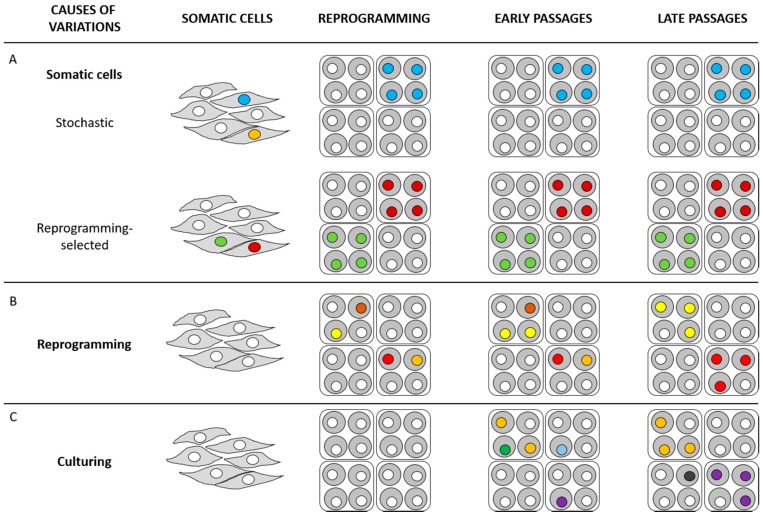Figure 1.
Origin of genetic variations in human induced pluripotent stem cells (hiPSCs). Genetic variations of hiPSCs may have at least three origins. (A) Pre-existing variations in parental somatic cells. If a pre-existing genetic variation does not influence the reprogramming process, iPSC generation can occur in a stochastic manner; in this way, it is possible that the cell with the genetic variation highlighted as a blue nucleus progresses in reprogramming, while the cell with the genetic variation highlighted as an orange nucleus does not generate any iPSC clone (stochastic). Differently, if a pre-existing genetic variation confers an advantage in the reprogramming process (garnet and green nuclei), reprogramming preferentially takes place in these cells (reprogramming-selected). (B) Reprogramming-induced mutations that occur during the reprogramming process. Mutations conferring advantages in self-renewal and/or proliferation eventually prevail the culture (red and yellow nuclei); mutations being deleterious for cell survival are selected against in culture (brown and orange nuclei). (C) Passage-induced mutations that arise during the prolonged culture. Analogously to the mutation selection described in (B), some mutations can prevail in culture (purple and orange nuclei), while others can be selected against in culture (green and sapphire blue nuclei). Prolonged culture can promote the appearance of further mutations in late passage (black nucleus). White nuclei represent cells with no genetic variations.

